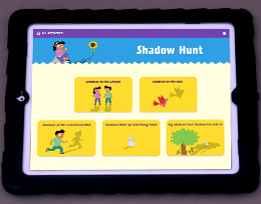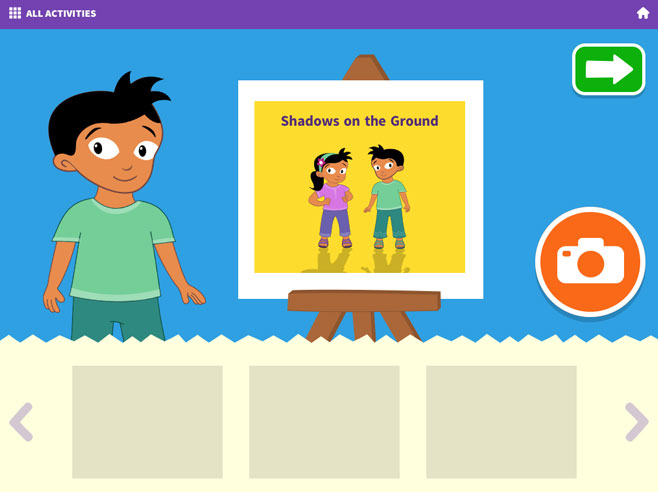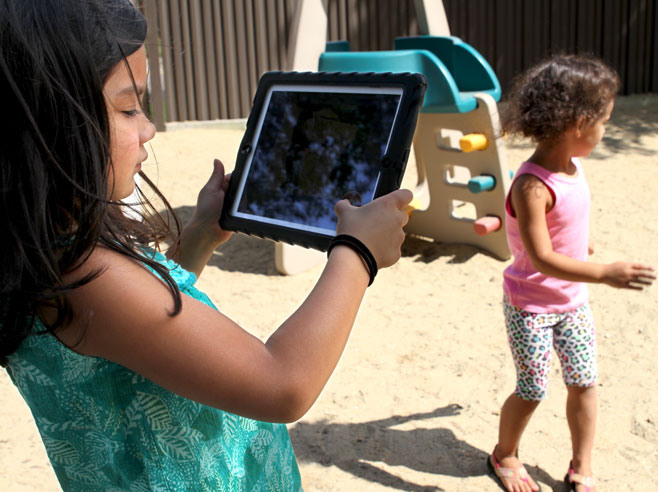Children hunt for shadows that match a list of descriptions and photograph their finds.
Materials

- Shadow Hunt tool in the digital Shadows Journal on iPads (1 iPad for each adult)
Preparation
- Familiarize yourself with the Shadow Hunt tool in the Shadows Journal app.
- The best times to schedule the shadow hunt are either early in the morning or late in the afternoon, when shadows are the longest. Visit your outdoor play area or other safe outdoor locations at different times of day to find out when shadows can be seen on different surfaces (the ground and a wall) and when you are able to find small objects that are casting long shadows and big shadows you can hide in (for example, the shadow of a building or a tree).
- This activity can be done with the whole class, but it works best when small teams of children can go on a shadow hunt with an adult and an iPad. Think about ways to organize your outdoor time so that several groups can simultaneously go on shadow hunts (each with an adult facilitator) or groups can take turns going on shadow hunts while the rest of the class has free outdoor play.
- SAFETY ALERT: Each time you go outside, remind children to never look at the sun because it can harm their eyes.
Directions: Lesson 2
Outdoors
- Open the Shadow Hunt tool from the activity index page of the digital Shadows Journal. Point out the five prompts to the children and say, Let’s hunt for shadows. The first thing to look for is a shadow on the ground. Tap that button to open the gallery page for shadows on the ground.
- Have children take turns finding shadows on the ground. Let them describe the shadow and then take a photo of the shadow with the Shadow Hunt camera tool.
- When your group has captured several photos, take some time to look at them together. Possible discussion ideas:
- What surface is this shadow on? Where is the light source?
- What object is blocking the light and making the shadow?
- Is the light over or under the shadow?
- Where is the light hitting the object? What is on the opposite side of the object (the side not hit by the light)?
- What do you notice that is interesting about this shadow?
- Continue to the next category of the shadow hunt, a shadow on the wall. Help children take photos and encourage them to make observations about the shadows they capture. Discussion ideas:
- What object is making the shadow?
- Is the light source above or below the object making the shadow?
- Next, can children find shadows that appear on both the ground and the wall?
- Where could they see a shadow made by something small? Can you make a hand shadow appear over the big shadow?
- For the last category, a big shadow your shadow can hide in, have one or more children hide their shadows in the shadow of a tree, a building, a slide, or another large shadow. Possible discussion idea:
- Can you hold out an arm or a leg so you can see its shadow sticking out of the big shadow?
- With each prompt, ask children to describe how the shadow is made, and then let a child use the Shadow Hunt camera tool to take a photo of the shadow. You can choose to search for all five categories in one day, or split the shadow hunt into a two-day activity.
Later, in Shadow Hunt Review, the whole class will view and discuss examples of shadow photos taken during this outdoor activity.


